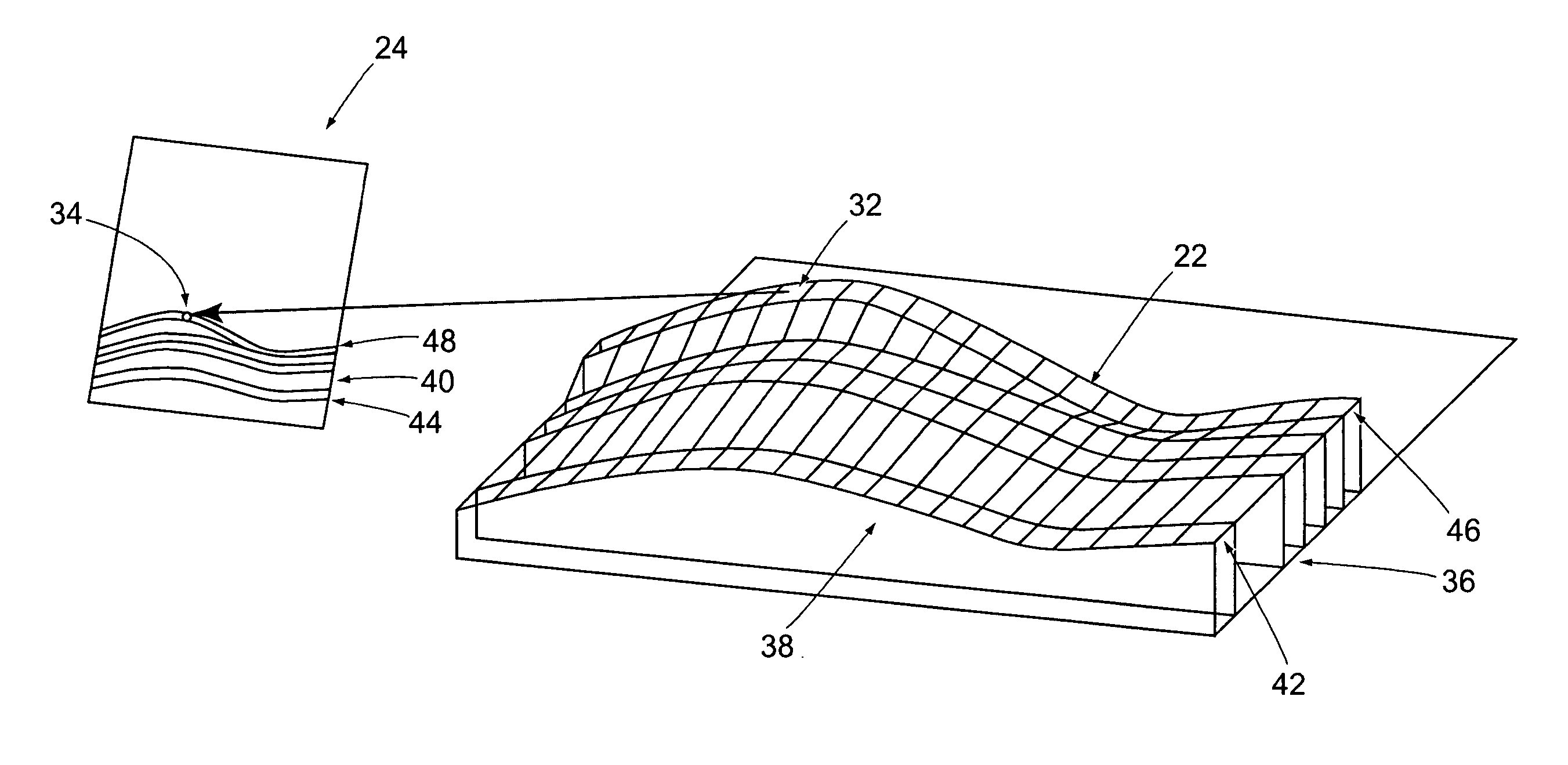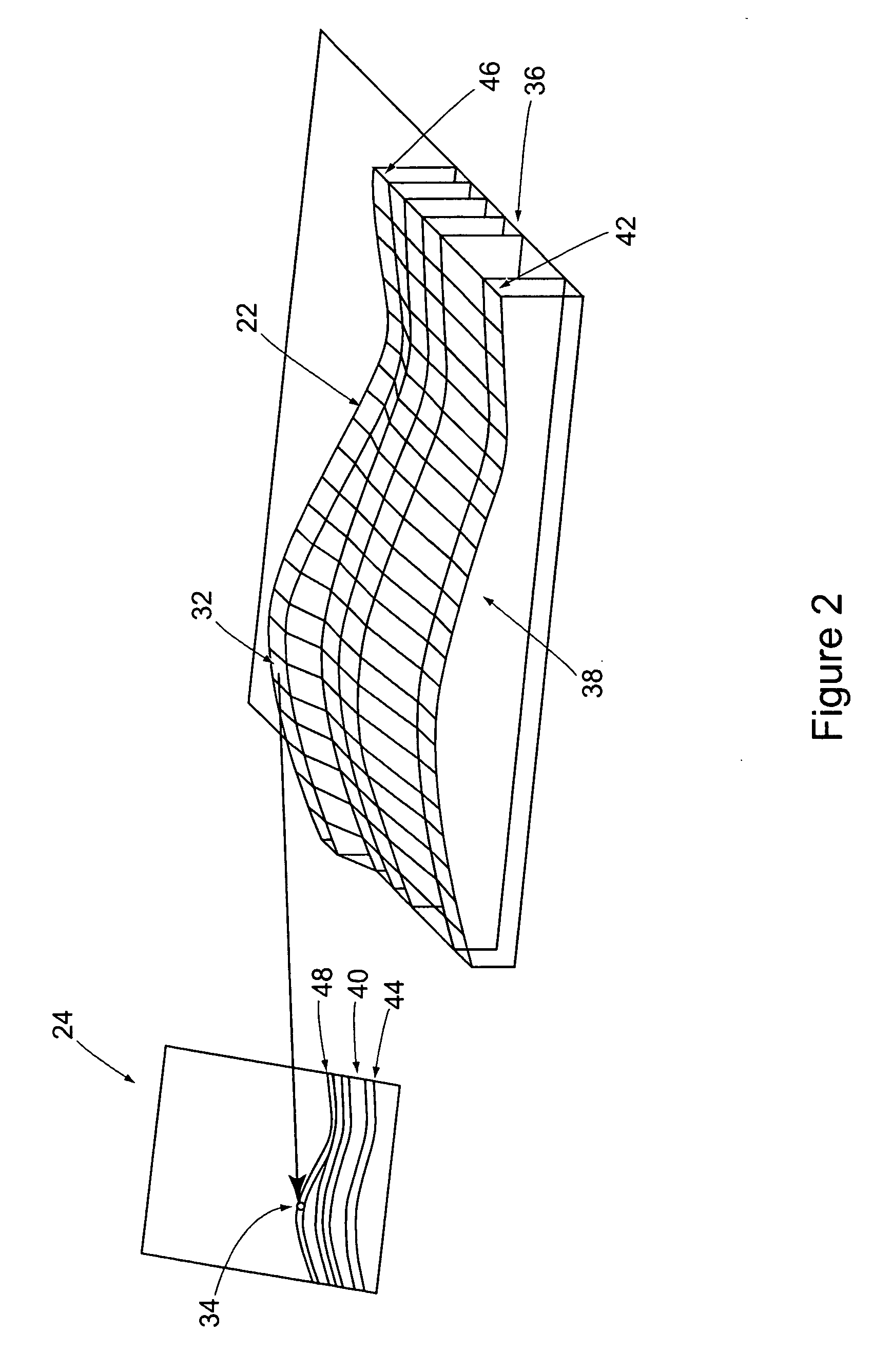Method for geocoding a perspective image
a perspective image and image technology, applied in the field of geocoding a perspective image, can solve the problems of insufficient accuracy of the on-board sensor, difficult and expensive, and insufficient information for two-dimensional perspective image reconstruction,
- Summary
- Abstract
- Description
- Claims
- Application Information
AI Technical Summary
Benefits of technology
Problems solved by technology
Method used
Image
Examples
Embodiment Construction
[0034] In a preferred embodiment, the invention provides a method of generating a perspective geocoordinate array for a location from a reference elevation array of the location, where the generated perspective geocoordinate array is recorded as a numerical array of electronically stored values for additional processing, or for storage in a computer file for later use. The description of the method to follow is made with reference to its use in a military aircraft, where the method generates a perspective geocoordinate array for a geographic target area. However, it should be understood that the method of the invention has many different applications, for example, for generating a perspective model coordinate array for a location to be used by a robot to enable movement of the robot around obstacles at the given location. In another example, the method of the invention may be employed in generating a perspective scene coordinate array of a location where a remotely-operated mechanic...
PUM
 Login to View More
Login to View More Abstract
Description
Claims
Application Information
 Login to View More
Login to View More - R&D
- Intellectual Property
- Life Sciences
- Materials
- Tech Scout
- Unparalleled Data Quality
- Higher Quality Content
- 60% Fewer Hallucinations
Browse by: Latest US Patents, China's latest patents, Technical Efficacy Thesaurus, Application Domain, Technology Topic, Popular Technical Reports.
© 2025 PatSnap. All rights reserved.Legal|Privacy policy|Modern Slavery Act Transparency Statement|Sitemap|About US| Contact US: help@patsnap.com



